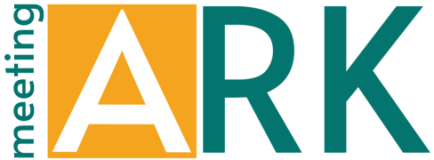Meeting feedback and follow-up
- Q: How to deal with a meeting I missed?
A: As soon as you realise this make sure to apologise to the chair/meeting arranger, directly if possible rather than email/IM (which should be a last resort). Then get copy of the action minutes and 1) make sure you properly diarise the next session you are invited to and 2) ensure any actions you picked up in absentia are completed on time. Also, try to speak to someone who was at the meeting to get a bit of additional context.
- Q: I think a meeting has left many points unresolved. How should I suggest another meeting be held?
A: Before the meeting closes, raise your concerns with the chair and suggest that another meeting be arranged.
If you didn’t manage this during the meeting, follow up points one-on-one with key influencers you noticed in the meeting and get detailed feedback on their reasons for not accepting outcomes/compromises in the session. This will give you a far deeper insight into whether a follow-up meeting is required and how to structure the next meeting(s) to have a better chance of settled outcomes.
- Q: How to deal with delegated actions not being completed?
A: When you review delegated actions at the next meeting, peer pressure often helps to encourage people to complete their actions when they see everyone else getting theirs knocked of the outstanding list. (This is one reason why having structured meeting notes and reviewing them at each meeting is such a useful tool).
If you find someone persistently doesn’t complete their delegated actions, you should first speak to them privately to find out what is stopping them completing their tasks and whether they need any help unblocking any barriers – e.g. their boss could be loading them up with other work that takes priority, in which case you need to discuss this with their boss to remove the blockage.
You might also have a discussion in the next meeting about any outstanding/overdue action points and, as a group, decide whether any need reallocating or redefining so that progress can be made.
- Q: The meeting was a shambles. How to ensure the next meeting doesn’t go the same way?
A: It’s always a good idea, before everyone leaves, to review the meeting and discuss with all the participants:
- What went well?
- What didn’t go well?
- What should be done differently next time? and
- What could we do more of to make things even better?
If the meeting was too much of a shambles to manage this sort of review before it ends, you should discuss these questions with all the participants (or the key influencers, in the case of a large meeting) afterwards. You might also want to send a note out, asking for feedback on these points.
Then you need to work with the key players to act on any suggestions to improve the next meeting.
- Q: What is the best method for actually incorporating meeting feedback?
A: Probably the best thing to do is to take some feedback at the end of the meeting – you would need to allow a few minutes on the agenda for this. Ask these four questions: 1) What went well? 2) What didn’t go well? 3) What could we do better next time? and 4) What should we do more of next time?
- Q: Are there any pointers about what NOT to do when giving meeting feedback?
A: You should avoid ‘destructive feedback’ – i.e. feedback which seeks to belittle or criticise a person (rather than their behaviour). As well as positive and negative feedback (about things that went well / badly), you should be aware that there constructive and destructive WAYS of giving that feedback. So try to be constructive, even if you’re giving a bad review.
- Q: How does a team keep up momentum between meetings?
A: There are a number of factors that could help. The first is to have frequent meetings – if people think the next meeting is not for a while, there is a temptation to put off any delegated actions until later. In between meetings, it can also be worth having some checkpoints to ensure things are progressing as planned. Another important factor is the team spirit – are all the team-members keen to work for each other? Then you need to consider leadership – if the team has an acknowledged leader, does that person set a good example of pushing forward with their own contributions?
- Q: Is the 'Feedback Sandwich' useful for meeting feedback?
A: Yes – the ‘Feedback Sandwich’ (sandwiching any critical comments between two positive comments) can help people accept negative feedback. It is also worth remembering that negative feedback (pointing out things that didn’t go well or made others feel uncomfortable) should never be ‘destructive feedback’ (that which seeks to denigrate or undermine a person), and feedback should always be given in a constructive manner.
- Q: Should meeting notes be distributed at the meeting?
A: If you have the ability to do this, then yes. The sooner the meeting notes are distributed, the better. So if you can use an interactive whiteboard, or something similar, to capture the essential points of the meeting, you can circulate the notes immediately.
- Q: How to stop a long delay in meeting notes distribution?
A: This is generally down to the efficiency of the note-taker, along with any review processes involved. So, if you want your meeting notes distributed promptly, appoint an efficient note-taker who you can rely on!
- Q: Should feedback be given face-to-face or electronically?
A: It is usually preferable to give feedback face-to-face, but of course that could be over a video call. However, if you feel your feedback should be shared with others, you may need to give it via email or by messaging app. You should also be aware of any cultural norms, including the protocols for your organisation.




